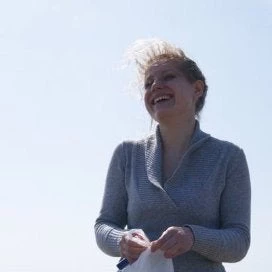 With
70% of the world's extreme poor living in rural areas, and improved water access still lacking for close to
768 million people around the world, investing in safe and sustainable drinking water for rural populations is important to our goal of eradicating extreme poverty within our generation.
With
70% of the world's extreme poor living in rural areas, and improved water access still lacking for close to
768 million people around the world, investing in safe and sustainable drinking water for rural populations is important to our goal of eradicating extreme poverty within our generation.
When compared to urban water supply, rural areas present a different set of challenges:
Often, the cost per capita of constructing water systems is higher in rural than in urban areas, due to a smaller population which is scattered over a large area. This, in turn, leads to high operating costs, to be recovered by fewer users.
Most importantly, there may not always be an obvious institution to take the responsibility of managing and operating the system after construction. This institutional vacuum leads to poor collection of water fees, and ultimately to poor operation and maintenance of the rural water systems. Keeping rural water systems working is perhaps even more important than building them. Leaving it up to the community to manage complex rural water systems has often been used to remedy the institutional challenge of operating and maintaining rural water systems, albeit with mitigated results. While there are no silver institutional bullets, three approaches from recent World Bank projects used innovative concepts to establish sustainable rural water supply:
1. In the Red River Delta Rural Water Supply and Sanitation project in Vietnam, four provinces piloted the establishment of Rural Water Supply and Sanitation Enterprises to manage the schemes built under the project. The Enterprises are accountable to, and part-owned by, local government and the local communities served by the schemes. The pilot aimed at recovering direct operating costs within the first 3 years of operation in order to guarantee reliable supply beyond the life-cycle of the project. This necessitated strong support from the local communities and the local government, and willingness for both to commit to higher tariffs for water. Already in its first year, the Enterprises are able to recover the direct costs of producing water and are on track to start repaying the investment loan in the next 3 years. The same project also successfully scaled up a revolving fund for low-income families to improve household sanitation, managed by the Women’s Union, which effectively combined microfinance, demand generation for sanitation and hygiene promotion activities.
2. In Ndieng Diaw in Senegal, a water supply scheme servicing over 100 villages (initially funded by Saudi Arabia) is managed by a Water Users’ Association , or ASUFOR in French. ASUFOR, upon obtaining a license from the Directorate of Operations and Maintenance, signs a management contract with a private operator for daily operations of the network, and sets water tariffs. The Directorate of Operations and Maintenance is responsible for overall Exploitation and maintenance of assets, validation of technical specifications of pumping systems, rehabilitation, renewal and extension of pumping systems, and oversight of the ASUFORs.
This system of institutional checks and balances has led to a significant increase in coverage, production and population served since the project started in 2004; community participation is crucial to affordable tariff-setting, though network extension remains a challenge as it is not covered by the tariff and funds come from central government. Strong capacity building for planning of maintenance, rehabilitation and extension of network, strong regulation, oversight and control of management contracts; and a sound asset management policy and investment planning are 3 key ingredients to ensuring the sustainability of this model.
3. The Rural Water Supply and Sanitation Project in Haiti introduced a professional management model involving local entrepreneurial water operators selected by the community to operate, maintain and manage the water supply systems, based on a contract signed with the communities. Professional operators were trained to manage piped water connections and water kiosks built under the project, including billing, expansion of network and daily operations, and they are supported at the local government level by the National Water Directorate’s (DINEPA) decentralized technical Rural Units. The Project promoted cost recovery, metering, and the use of household connections and water kiosks, as well as gravity-fed piped systems, and where pumping was necessary and cost-effective, the project gave a strong preference to renewable energy, such as solar. Most professional operators are currently able to cover their operating costs with the current tariff structure and some are able to generate net benefits. While the delegated professional management model for water systems was lengthy to implement and still needs to be refined, the DINEPA has received requests from communities outside the project area who have heard about the model.
What is your experience in sustainable management of rural water supply? What do you think is essential to sustainable rural water management? Please share in the comments’ section below!
With special thanks to Hoa Thi Hoang, Parameswaran Iyer, Jean-Martin Brault, Sylvestre Bea, Miguel Vargas-Ramirez and Lilian Pena Peireira Weiss for their contributions to this blog.


Join the Conversation